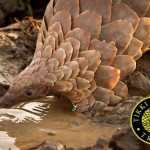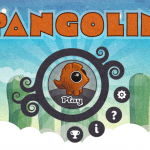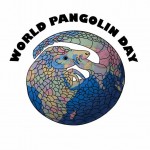A suspected wildlife trader accused of murdering his accomplice over the suspicious sale of a pangolin awaits his verdict.

The illegal wildlife trade is deadly – and not just for the animals.
A trial against a man accused of murdering his accomplice in an alleged pangolin trade operation came to a conclusion this week in Cambodia, and a verdict is due to be announced on Tuesday.
Deputy Provincial Prosecutor, You Yoeun Ny, told The Phnom Penh Post that the case has been complicated by both the plaintiff’s and defendant’s changing stories.
Suspicious house fire ends in death
Key witness and mother of Leeang Saroeun claims her son was working for Ou Bunthan – who seems to be known as an illegal wildlife trader – when the two had a disagreement over a pangolin.
Bunthan alleges that his accomplice sold the animal out from under him, keeping the profit for himself.
However, the victim’s mother says the defenseless creature escaped while her son was transporting it Pursat town.
Two days later, Saroeun’s cottage was suspiciously set ablaze while he slept inside.
Although the man survived the fire, he later died from severe burns suffered in the process of escaping.
Before his death, a representative of a human rights group called ‘Licadho’ interviewed Sarouen and recorded him saying that the fire had been set by Bunthan.
The suspect asserts that the recording is a fake and denies any involvement in his accomplice’s death.
It is unclear if Bunthan currently faces any charges related to or is being investigated for his alleged involvement in wildlife trafficking.
Organized crime and the illegal wildlife trade
Black market trade in pangolins and other wildlife is largely carried out by international networks of organized crime syndicates that employ sophisticated technology and utilize multiple channels to acquire and transport their illicit ‘goods’.
Not unlike ‘The Sopranos’ or ‘The Godfather’, it seems these criminals resort to extortion, bribary, menacing, and even murder to get their jobs done – in addition to the immeasurable bloodshed they inflict on their animal victims.
Their resources, networks, and far-reaching tentacles have commercialized the trade, making lucrative commodities out of rare wildlife.
Many such crime rings are well-connected and are believed to have ties to politicians and law enforcement.
Pangolins Murdered for Myths
An estimated 41,000 (and perhaps as many as 60,000) pangolins were poached from the wild in 2011 alone.
This rampant slaughter is driven by an insatiable demand for the scaly anteaters that stems primarily from China and Vietnam.
There, the flesh of adults and fetuses are consumed as delicacies and for superstitions surrounding good fortune and ‘health benefits’.
Like other animal-based traditional Chinese medicines, pangolins’ blood and body parts – especially their scales – are superstitiously used as a ‘cure-all’ remedy for things like reducing swelling, improving liver function, weight loss, stimulating blood circulation, enhancing lactation in breast-feeding women, and even cancer.
There is no scientific evidence to support any of the medicinal claims made about pangolin body parts.
In fact, rhino horn and pangolin scales (much like our own hair and nails) are chiefly composed of keratin and studies have repeatedly shown rhino horn to be void of any medicinal properties.
It’s now believed that the plundering of these mammals has been greatly amplified by lucrative ‘medicinal use’ pangolin farming ventures in China, which have seem to have significantly increased the demand for these animals.
Author: Sarah Pappin. Read more about Sarah here.
Image via Wikimedia Commons, adapted by author.






Comments are closed.